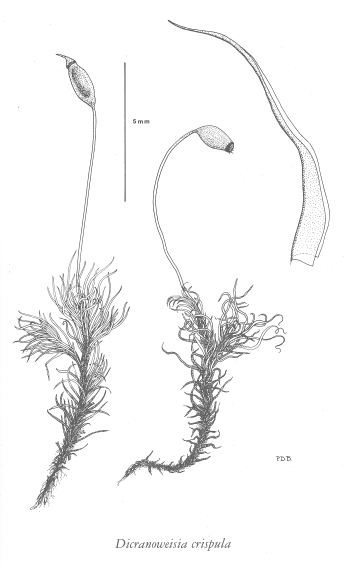E-Flora BC: Electronic Atlas of the Flora of British Columbia
Dicranoweisia crispula (Hedw.) Lindb. ex Milde
no common name Dicranaceae Species Account Author: Wilf Schofield Extracted from Some Common Mosses of British Columbia Introduction to the Bryophytes of BC
|
|||||||||||||

